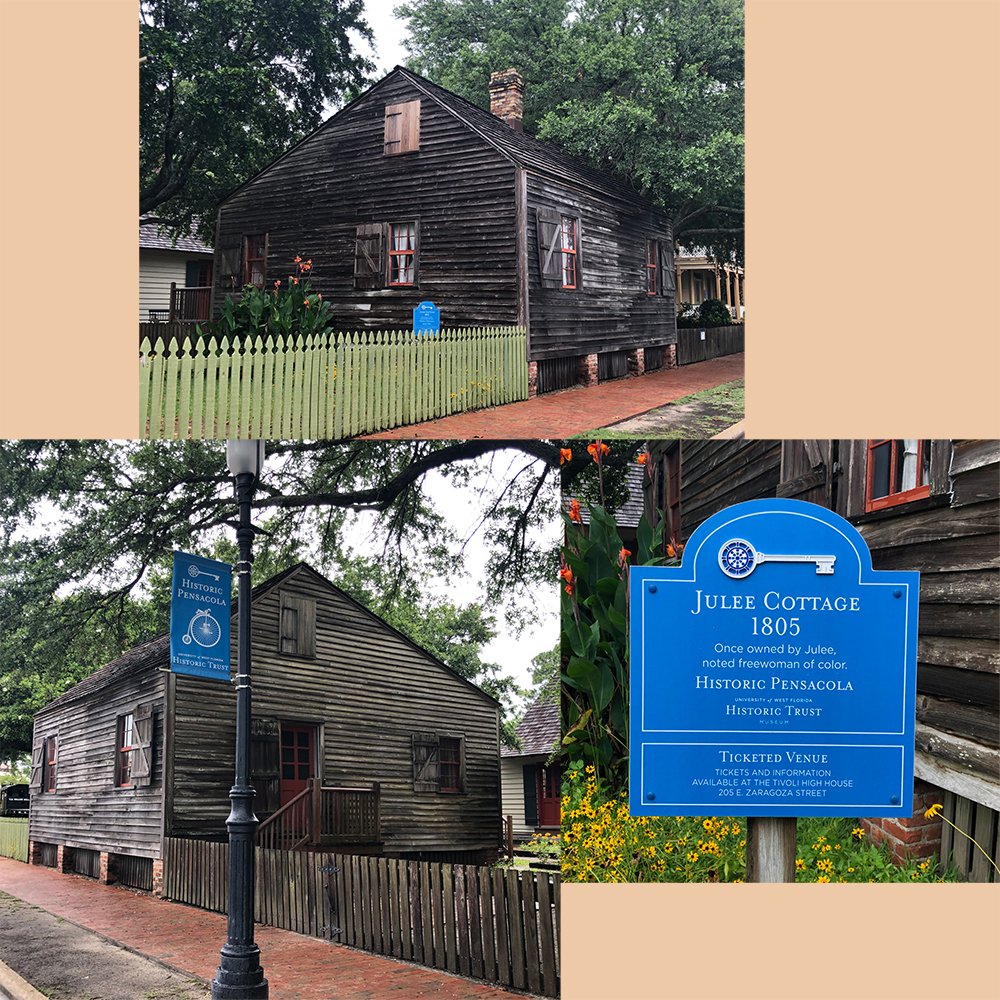Many a mile I have walked, traversing the streets of historic Downtown Pensacola. Like an aficionado of fine art sauntering down exhibit aisles, curiosity piqued, eagerly anticipating the next great work to marvel, I gazed upon historic building after historic building in wonder of the fascinating stories they could tell.
My fervor for historic architecture began when I was an undergraduate student at the University of West Florida. I was a history, philosophy, and art history triple major; I loved it all. While completing an historic architecture-related project for an art history course, I took to the streets of Downtown Pensacola having never explored the area before, despite the fact that I was born and raised in North Santa Rosa County. Long story short, those streets became my stomping ground.
Then, one day, I happened upon a real beauty, positioned starkly close to the sidewalk on which I strolled. I don’t know what it is about the Julee Cottage, but something just draws me to it–history aside, I just love the building. Quaint. Humble. Pleasant. Picturesque. These are all descriptors my mind conjures while gazing upon this magnificent structure. Offset only slightly from the charming brick sidewalk, this delightful saltbox-style cottage is only made more appealing by its gorgeous landscaping. I could drone on and on about its aesthetic appeal; nevertheless, as the old adage goes, “a picture is worth a thousand words.”
Then, there’s the history, and in this realm, the Julee Cottage reigns supreme. Constructed between 1790 and 1808, most historical records indicate it was most likely raised between 1804 and 1808. It was around this time that Julee Panton, a “free woman of color,” purchased this cottage and myriad other properties in the area. Anecdotal accounts bedded in Pensacola traditional folklore suggest Julee, despite being a “free woman of color,” actually purchased slaves herself. But, why? Thankfully, Julee’s intentions for making such transactions were virtuous. It’s believed that Julee purchased slaves, allowed them to work for others to earn money to repay their debt, and then set them free!
I just love stories like these, and learning more and more about the rich history of the Julee Cottage only made me grow fonder of the darling structure. Today, the Julee Cottage is quite active, serving as one of many unique and interesting components of historic Downtown Pensacola’s self-guided tours. I encourage you to visit the Julee Cottage for a glimpse into the life of a working-class, African-American family during a fascinating time period in American history–Reconstruction. Tickets and additional information are available at the Tivoli High House, located directly across the street from the Julee Cottage, at 205 E. Zaragoza Street.
Happy history, my friends!


